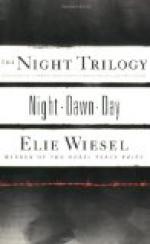When they had nearly reached the palace
gate
On their return, the king drew to the
right
With his attendants, while the prince
with his
Drew to the left, reviewing all the line
That passed again down to the judges’
seat,
Under the king’s pavilion near the
lake.
The prince eagerly watched them as they
passed,
Noting their brawny limbs and polished
arms,
The pose and skill of every charioteer,
The parts and varied breed of every horse,
Aiding his comrades with his deeper skill.
But when the queens of beauty passed him
by,
He was all smiles and gallantry and grace,
Until the last, Yasodhara, came near,
Whose laugh was clearest of the merry
crowd,
Whose golden hair imprisoned sunlight
seemed,
Whose cheek, blending the lily with the
rose,
Spoke of more northern skies and Aryan
blood,
Whose rich, not gaudy, robes exquisite
taste
Had made to suit her so they seemed a
part
Of her sweet self; whose manner, simple,
free,
Not bold or shy, whose features—no
one saw
Her features, for her soul covered her
face
As with a veil of ever-moving life.
When she came near, and her bright eyes
met his,
He seemed to start; his gallantry was
gone,
And like an awkward boy he sat and gazed;
And her laugh too was hushed, and she
passed on,
Passed out of sight but never out of mind,
The king and all his counselors saw this.
“Good king, our deer is struck,”
Asita said,
“If this love cure him not, nothing
can cure.”
[1]Lieutenant-General Briggs, in his lectures on the aboriginal races of India, says the Hindoos themselves refer the excavation of caves and temples to the period of the aboriginal kings.
[2]The art of irrigation, once practiced on such a mighty scale, now seems practically a lost art but just now being revived on our western plains.
[3]"And, that which all faire workes doth most aggrace, The art, which all that wrought, appeared in no place.”
—Faerie Queene, B. 2, Canto 12.
[4]See Miss Gordon Cumming’s descriptions of the fields of wild dahlias in Northern India.
[5]By far the finest display of the mettle and blood of high-bred horses I have ever seen has been in the pasture-field, and this description is drawn from life.
[6]Once, coming upon a little prairie in the midst of a great forest, I saw a herd of startled deer bound over the grass, a scene never to be forgotten.
[7]See Miss Gordon Cumming’s description of a hill covered with this luminous grass.
[8]There can be no doubt that the fire-worship of the East is the remains of a true but largely emblematic religion.
[9]The difference between the Buddhist idea of a deva and the Christian idea of an attendant angel is scarcely perceptible.
[10]The Brahmans claim that Buddha’s great doctrine of universal brotherhood was taken from their sacred books and was not an originality of Buddha, as his followers claim.




